How does the digital constructor: the basic principles
Offhand, the exhibition "Merkur and other designers" in the cultural center ZIL does not make an impression - here is the metal constructor, the plastic one, the engineering one, and so on.
But one stand attracts attention - it demonstrates about a dozen digital designers, including:
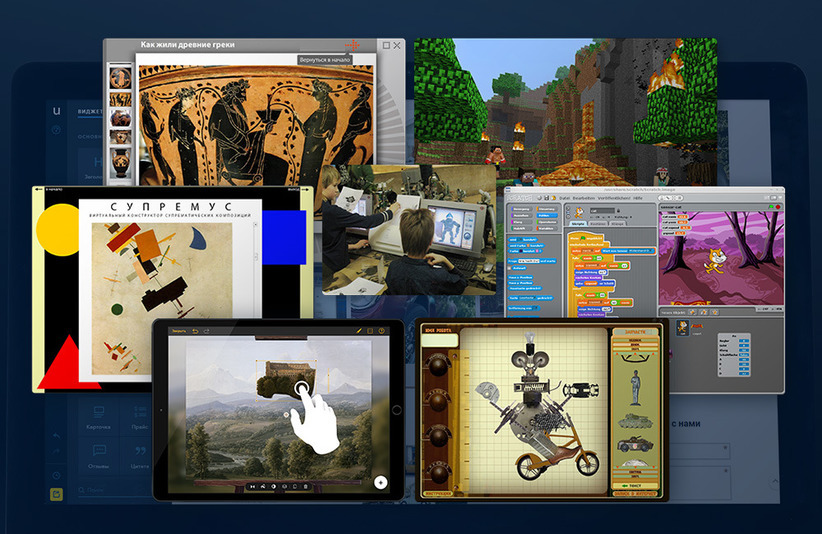
')
- the designer of fantastic creatures for schoolchildren, who explains the whole culture of ancient Greece in 5 minutes,
- an online designer of robots from scrap materials, explaining what to do with the old pioneer badge with Lenin,
- and the designer of classic landscapes for visitors to the Tretyakov Gallery - he explains why all the landscapes of the 18th century are more or less the same.
Since designers are increasingly finding us in digital form - it is useful to know the general concept of their device. We will talk about this with an expert.
It turns out that the author of digital constructors from the stand is sitting in the same building where the exhibition is taking place.
We talked with Nikolay for two hours and found out - for whatever the digital designer was created: for school, for games or for business - it will work according to the same laws.
Nikolay: “When I see parents who buy only“ Lego ”for children, I tell them:“ Who do you want to see him when a person finishes a higher education institution — a performer in a large company or a creator and, possibly, the owner of this company? ”
The point is that from the point of view of story-telling, “Lego” is beautiful - for example, we collect the bathyscaphe with our grandson, and in parallel, I introduce him to the subject of underwater research. But from the point of view of the development of creative thinking - this designer is weak, because it is often taught to assemble a certain thing in a strictly defined way.
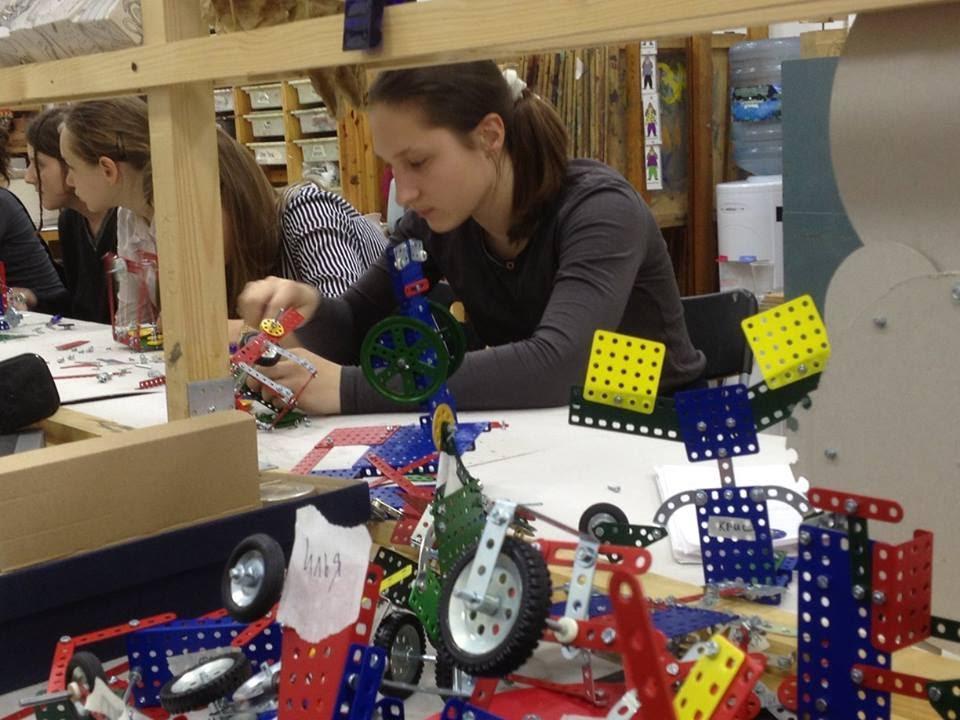
Lesson at the " Workshop of artistic design ", led by Nikolai
The task of the designer is to give the experience of creating certain things — that is, to understand the basic principle, and not to learn how to do it “specifically”. In this regard, even simple cubes are a great example of a correct constructor. There is much to do with it — yes, at least a model of the universe is explained.
Another good example I’ve come across is brochures and books for DIY, which were published en masse in the 1930s. For example, it says something like this: “Here's the principle of the propeller; understanding it, you can do with it even a plane, even a quadcopter. ” That is, it shows the base from which you can achieve a lot and different. And not a step-by-step instruction for each case that sits in my head. ”
uKit: When we first started writing about constructors on Hiktaimes, a retelling of the story about “a constructor is just to do something like that” appeared in the comments - it turned out that the problem of understanding why a constructor is needed sometimes does exist:

Although the designer - what is usual, what is digital - solves the problem of knowing and probing a new direction. Passing the first steps through personal experience based on the experience of others.
For example, Scratch is both a visual environment for teaching schoolchildren to programming, and the first steps in animation that MIT experts thought for you.
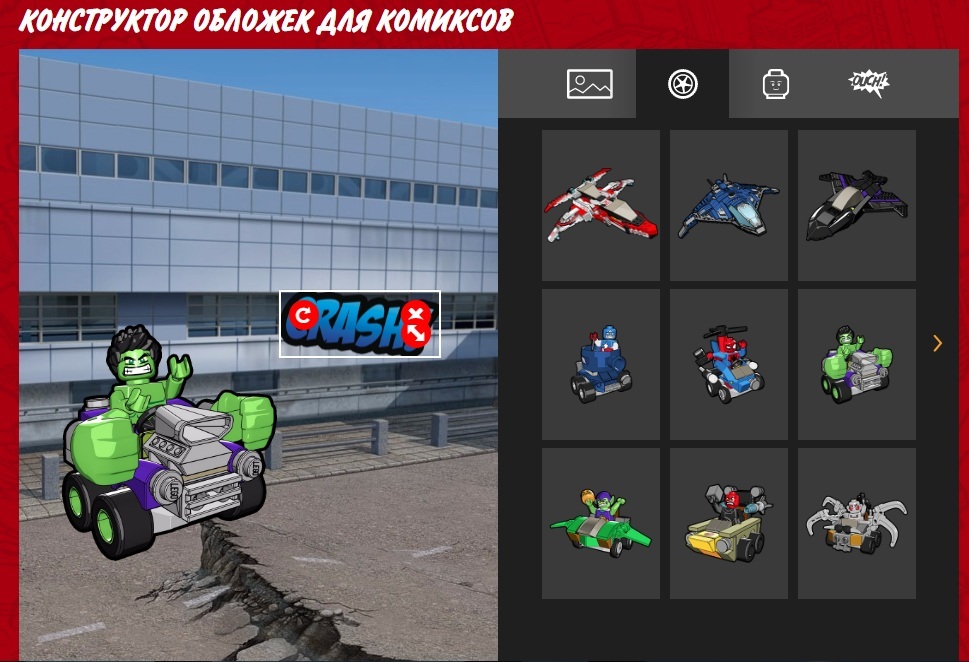
The same unpretentious online designers of banners and covers from Lego are the first steps in graphic design for small ones, taking into account both the marketing task and a demonstration of how to make a poster / banner / collage.
And so - up to the adult digital designer.
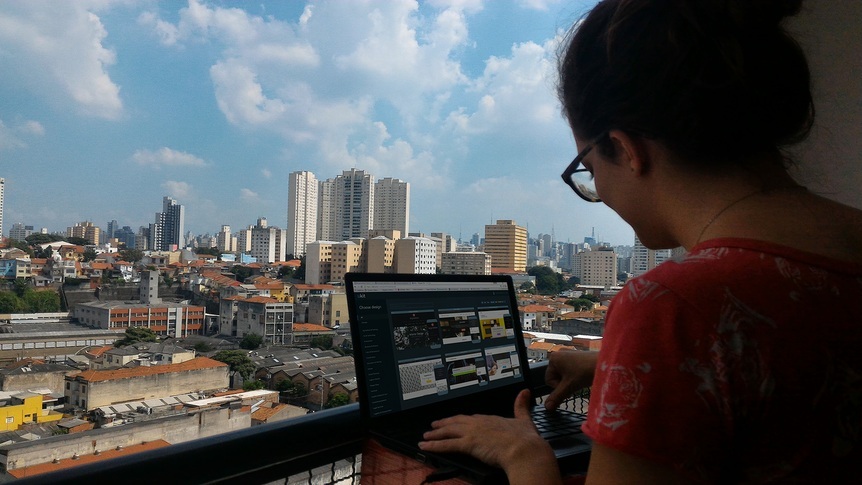
A sister of our Brazilian colleague is building a website on a designer somewhere in São Paulo.
Any site can be assembled in different ways, and your task as a designer’s developer is to point out a common path and give room for rational creativity by highlighting the main points. And not to drive into the head the concept that "any site should contain an in-oh-oh-oh of such a button of green or red color, just say, my brother has risen so . "
That is why elements and logic are selected for each constructor according to the situation.
Nikolay: “Each designer has his time and place. Every designer of mine is an attempt to solve a problem. For example, take a group of schoolchildren, take them to the hall of ancient art. At the site we will long tell them how the famous Greek vases were made. But! The principle on which they were created will remain “closed” for them, believe me - new generations often do not perceive the cultural experience of the past.
And this principle is. Any engineer would say - this is the principle of the unit: when a combination of different elements forms a system for solving a single task.
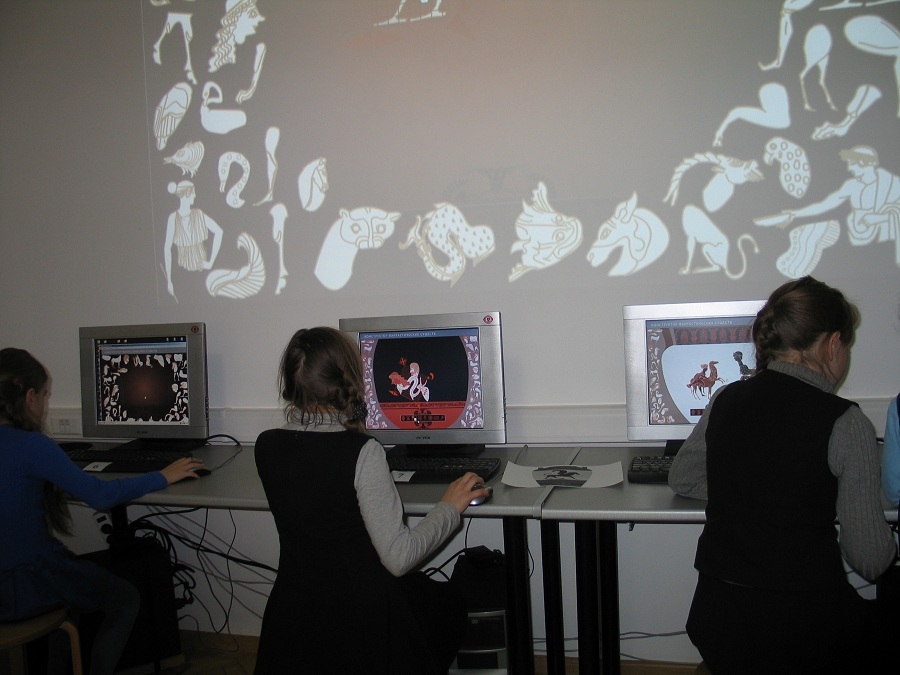
Children study the designer of fantastic creatures in the advanced lessons of fine art
So I came up with the designer of fantastic characters - he lets you visually feel the method by which images were created for different types of antique ceramics. When children of grades 2-8, having tried such a designer, come to the museum, they understand how, why and from what the object was created.
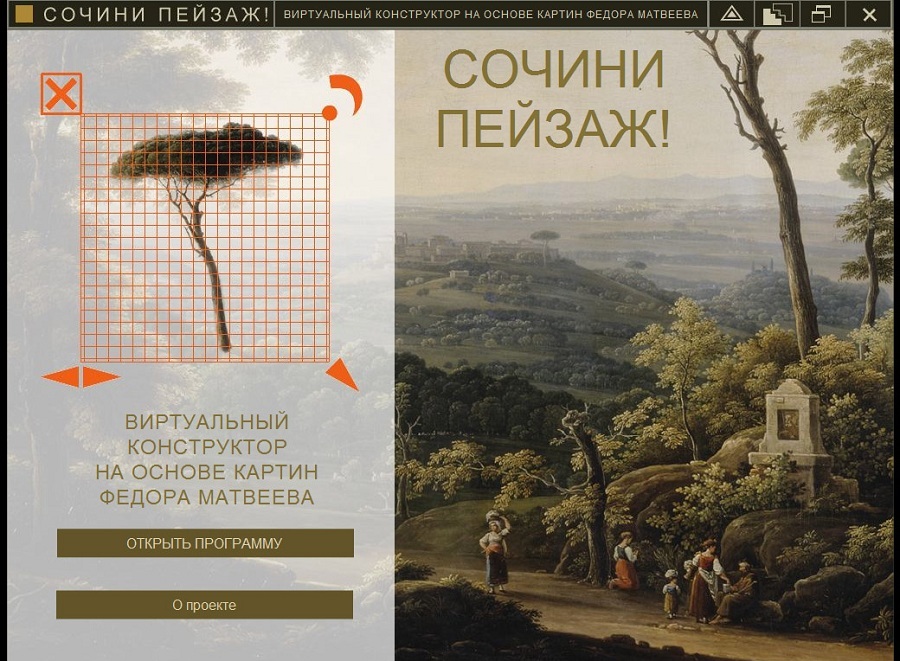
And this constructor can be downloaded for free in the App Store and Google Play (the version for the tablet was no longer designed by Nikolai)
Take another example - the designer "Compose a landscape" for the Tretyakov Gallery. which we did to the exhibition of the painter Fyodor Matveyev, who lived at the end of the 18th century. This product is designed for a different task.
We wanted to give an idea of how the artists of that time worked. And the designer is based on the methodical scheme of writing a classical landscape - this is a specific color scheme, a specific concept of perspective and the principles of the arrangement of objects on the plans.
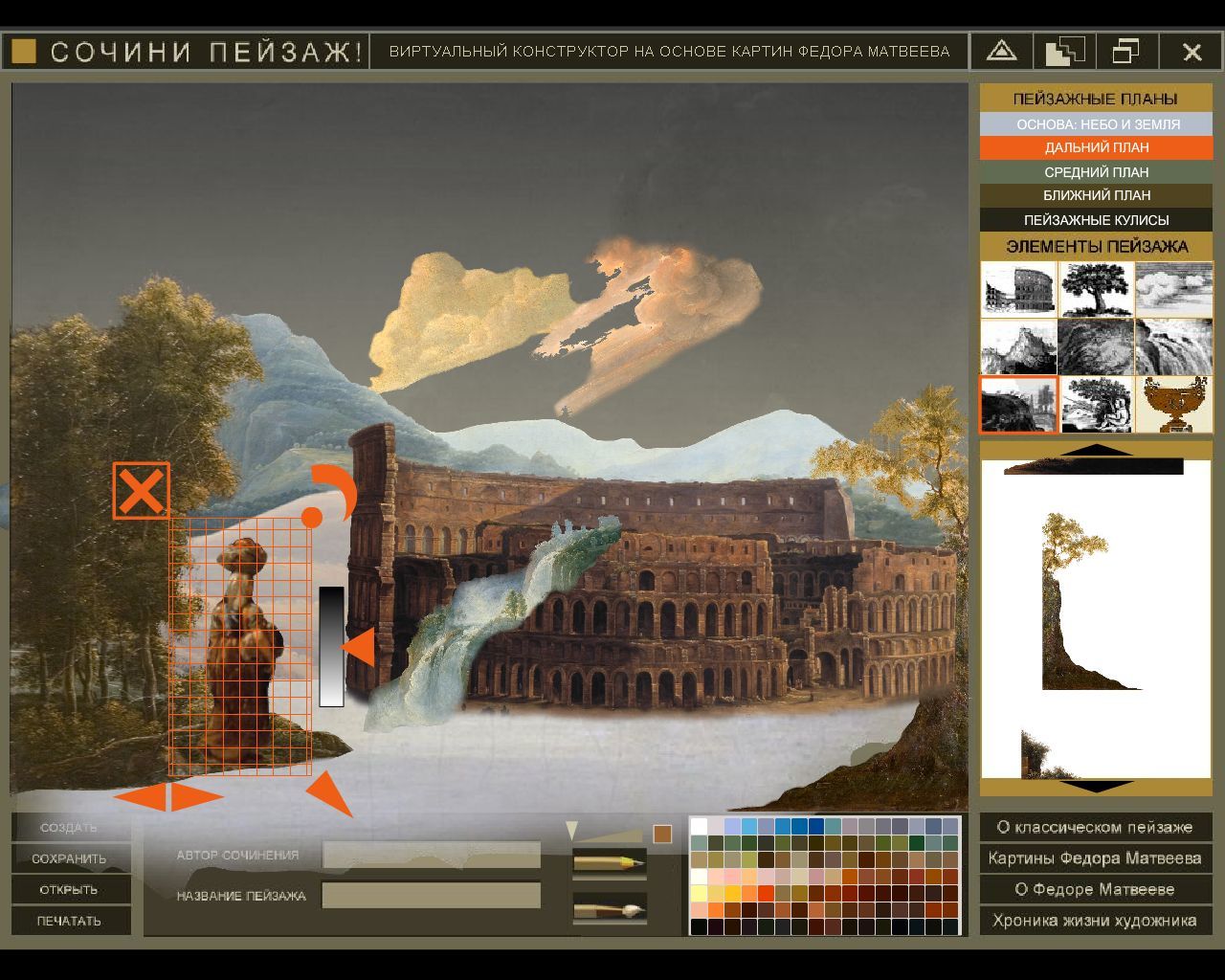
The designer himself was originally released on CD in 2008
uKit: Digital designers have always been based on the problem to be solved. Take, for example, uCoz - the first project of our company. In 2005, he solved the problem of the founders and their “get-togethers” - to make a fan-site, forum, blog or portal, without delving into FreeBSD. It was a geek product.

When, at the break of the 2000s, social networks began to replace fan sites and portals, and small business began to go online, the idea of our uKit, the “simpler designer,” appeared.
It also implements a system of soft "checks and restrictions", pushing a person to understand what data is important on the site. For example, in the first step, we ask the site creator to fill in the address fields and give the telephone number of your company - because this is important information for a client of a car dealership or a repair workshop.

Digital constructor in 2016 year. A typical block of the start screen of the main page, for example, pushes to the thought that the visitor should understand at a glance what kind of site this is.
Such soft tips do not limit the creative impulse - any block can be deleted or redone. But in every digital constructor there are limits that can not be transgressed.
Nikolay: “An important task for the author of the designer is to find the line between the originality of his design and its simplicity. Because to invent a designer and use it is different. Creating my constructors, I came to this scheme: there is a grid, a clear palette and a clear set of elements from which to choose, plus several options for combining them. A kind of system of restrictions.
For example, take the same designer fantastic animals, which with textbooks buy educational institutions. I give it a very limited palette.
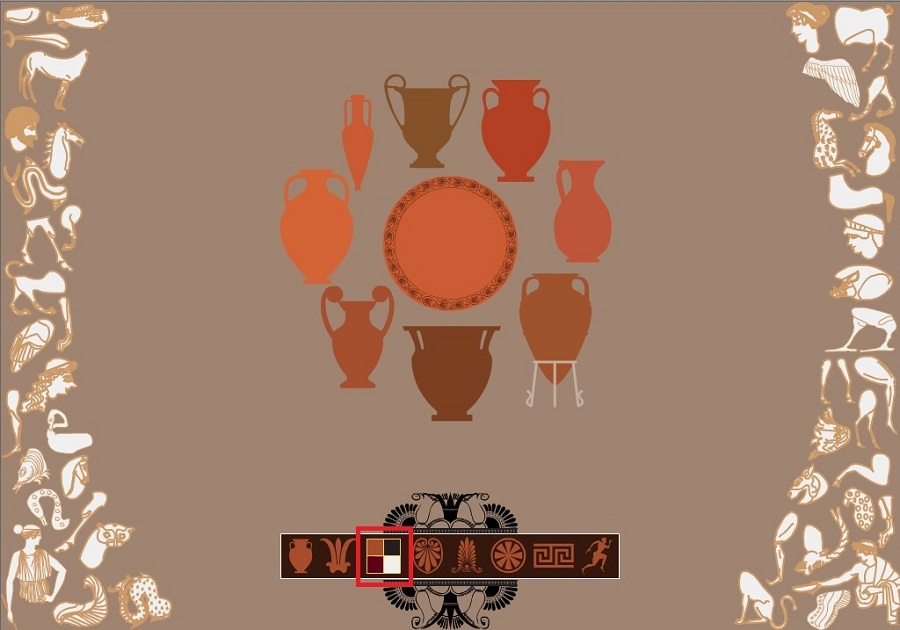
But in the same designer of classical landscapes, you saw the palette is richer. The dividing line of possibilities is different - we have imposed restrictions on the movement between the main plans of the picture. These frames were formed historically, they were defined by the artists of that time themselves - starting from where and what can be located (for example, architecture is always on the middle ground in a classical landscape, and on the front - an event), and ending with what the focus should be attention.
This restriction disciplines . ”
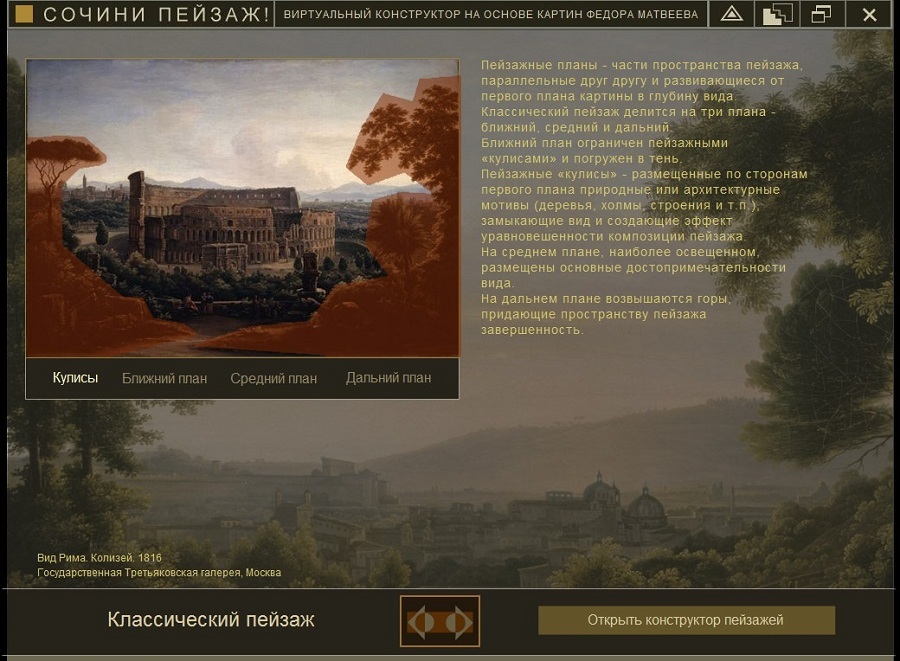
uKit: It is clear that any digital designer has a “what is possible and what is not” framework also trivial because only a developer can make changes to the system. And the developer has a plan for half a year or a year ahead: and sometimes it is more important to release a version for the visually impaired, and not to cut "the thing that ...".
Of course, in the end, some of the user hacks are implemented. But there are limitations that are intentionally “nailed”. For example, we also imposed a restriction on the color palette at our home - the user is given three sets depending on the theme of the template (business).
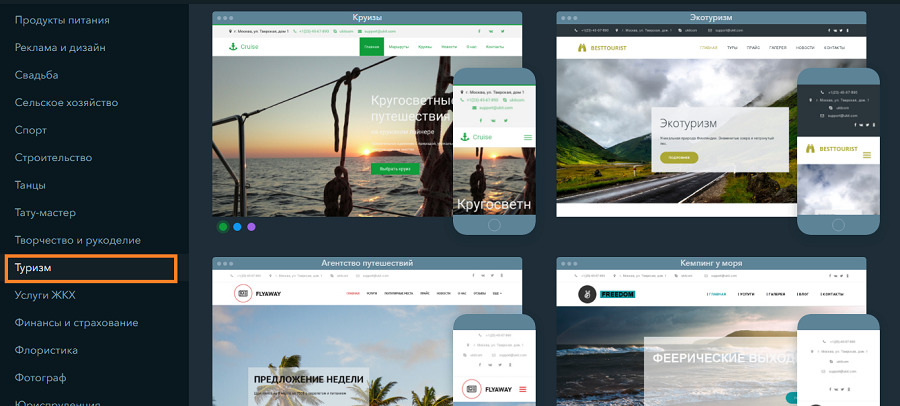
This, of course, is not that "a car can be of any color if it is black." This is an account of the psychology of colors (a simple example: a travel agency website will suit turquoise and blue, as they are associated with the sea and the sky). And attention to detail: so that the palette and the set of fonts match on any page.
Finally, if you are creating a website for a bakery, hardly a light pink text on an acid yellow background would be the perfect solution. And there are those who are trying to do so ...
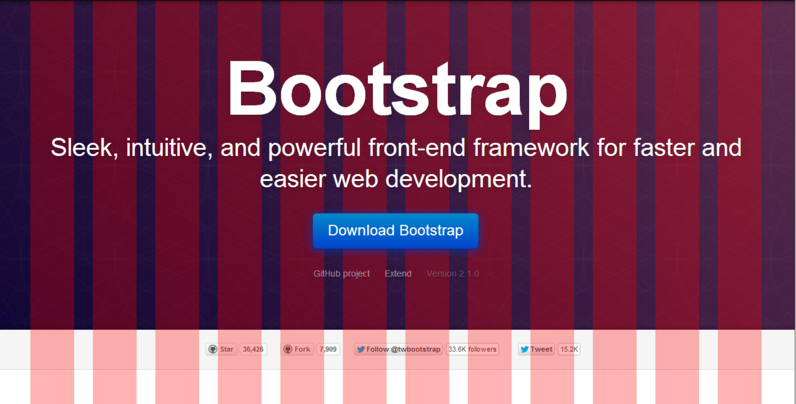
There are other useful restrictions - for example, you can not embed a comment widget anywhere, except for the blog. First of all, why do small business widgets have comments on their website when there is an online chat, callback and feedback form? Secondly, like Nikolai and many others, we came to the grid supporting the constructor: it performs an application function - it helps the site to adapt to different screens on the fly.
Nikolay: “No matter what design we do with our children, I always encourage the guys to give names to their creations. And in the digital environment, a name is one of those most useful limitations. For example, somehow we made a designer of robots out of household trash: you take, for example, a pioneer badge with Lenin, a tin can, light bulbs, nuts — you assemble a two-dimensional robot from them, and then write instructions for it.
One of the conditions in our constructor is to come up with a name for the robot and give it a serial number. So that everything was grown-up. ”
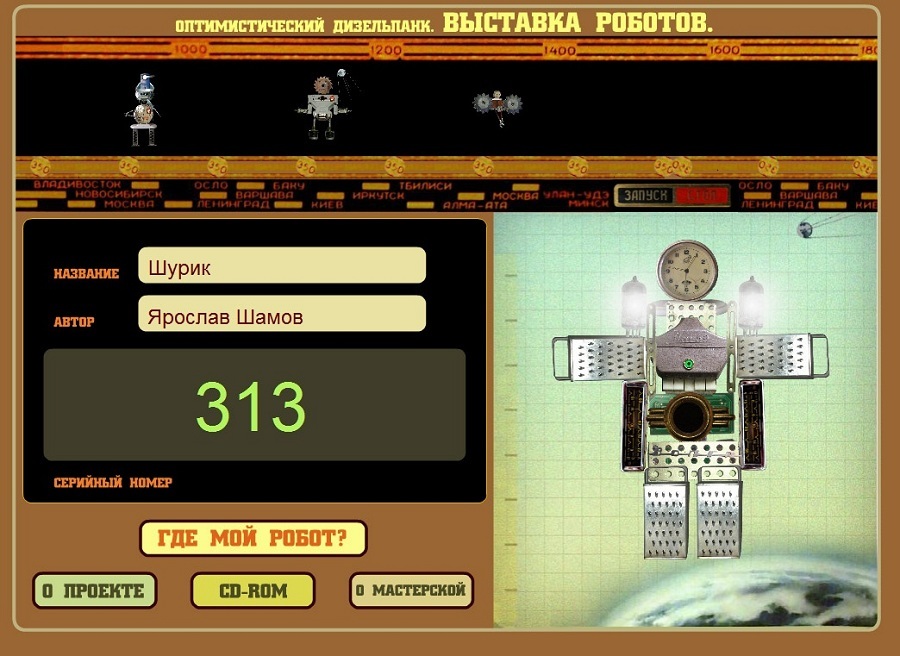
uKit: It's natural for a person to give the name to his “child”. Well, for any information system you need an identifier, according to which, ideally, not only a robot, but also a person will be able to find a specific creation.
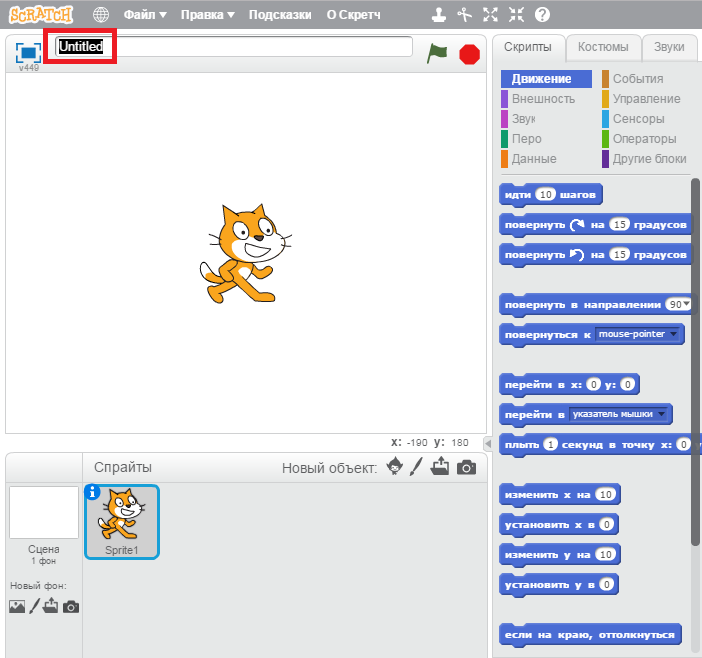
When you make an animation in Scratch - you need to give it a name. When you have tamed a horse or another “mob” in Minecraft - you want to give a name, and sometimes you need to pay for this privilege - to buy a tag in a game.
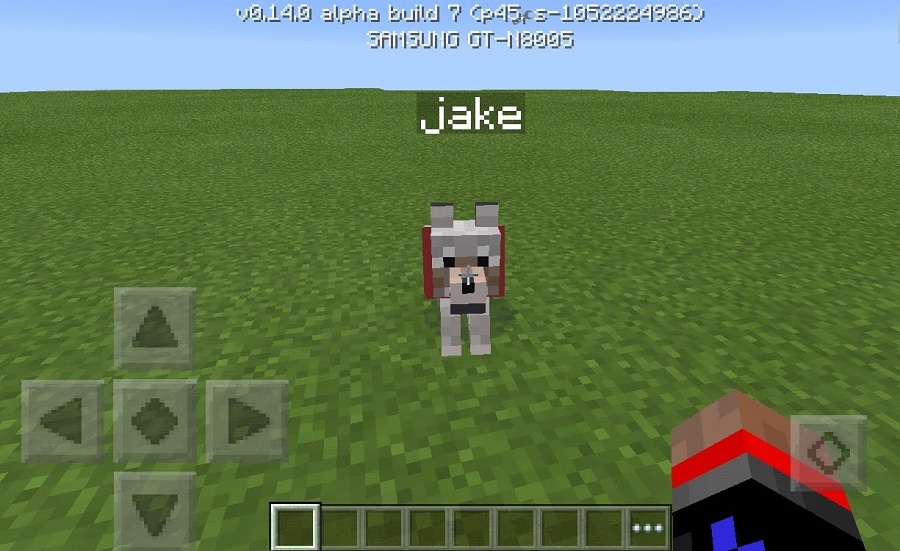
When a person has made a website - ideally, he needs not a third-level technical domain, which is automatically issued by any designer, but a full name for the site. This is not only a soft attempt to earn an extra 600-900 rubles a year, but a soft eyeliner to make the creation complete.
Nikolay: “Most of the works are monetized by request: for example, the designer for the Tretyakov Gallery sponsored Severstal (we also did another corporate designer for the company).

The designer of fantastic animals is sold by the publishing house as a supplement to the textbook FROM
Almost all of my designers, I created in the 2000s - and their carrier was the CD. Disks with designers available for retail, I even once posted on the site. Of course, now we are thinking about how to reorganize - almost all designers have web versions that we customize, but they are created in Flash. And everyone has already switched to HTML5. ”
uKit: Online designers have one advantage - the SaaS model has long replaced for most not only disks, but also flash drives. And it seems not going to die.
Otherwise, if MIT resources do not stand behind you (as with Scratch), the PR task (as was the case with Lego Digital Designer - but the project was closed ), or you do not have an open-source project supported by a large community, sooner or later your designer will have to be monetized.
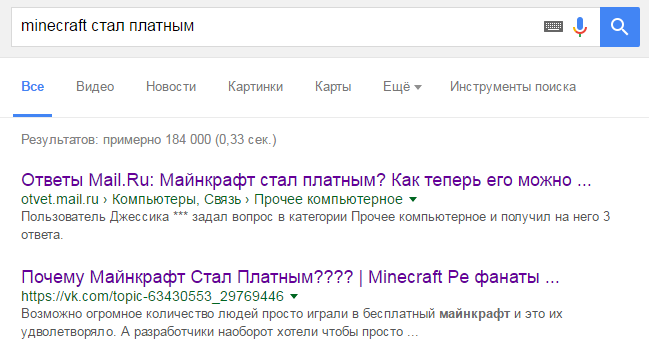
Trite because, returning to paragraph 3 of our review - there is a team that supports the project and wants to eat. Whether Minecraft is a good thing about their monetization , which began almost immediately, even before “universal monetization” three years ago. Whether it’s a website builder, there are no free solutions on the market today, if it’s not student crafts.
Nikolay: “I didn’t meet people who would play with any designer all the time, without switching to new ones. A constructor, especially a digital one, is a demonstration of the technique. You studied it, interpreted it - and went on. "
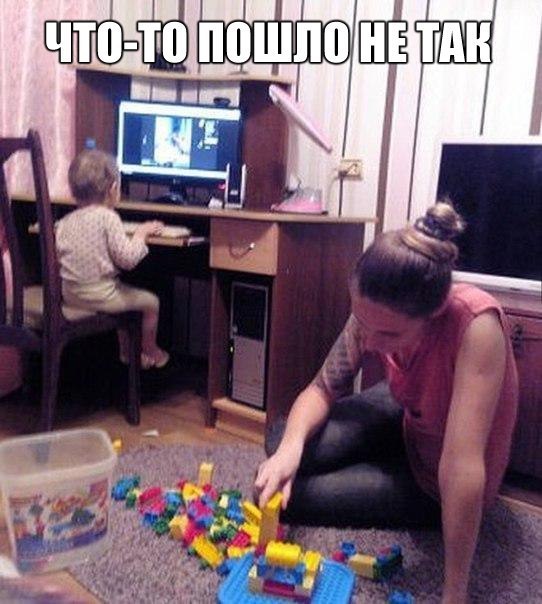
uKit: In the world of IT projects, there is a notion of customer lifetime in this regard. For example, the average lifetime of a small business site assembled on a constructor is 2 years. Either he felt for the Internet for himself, understood what he wanted - and will consciously feel more complex platforms, or - sadly, for such a period, the company often simply closes.
Nikolay: “The chip of digital designers, whether it’s children's educational programs, games or specialized solutions, is an opportunity to combine them with the latest technologies. And the most promising here is the use of VR in digital designers.

It seems to me that such integration will open up a lot of new applications to digital designers - in education, business (for example, tourism), preservation of cultural heritage and other areas. ”
uKit: Yes, the same Minecraft was shown in combination with virtual reality glasses:
In the world of site designers VR is hardly applicable. But AI - to the very point. Today, several website designers are trying to integrate neural networks into their products at once in order to facilitate the most tedious stage - website prototyping for a business task.
But one stand attracts attention - it demonstrates about a dozen digital designers, including:

')
- the designer of fantastic creatures for schoolchildren, who explains the whole culture of ancient Greece in 5 minutes,
- an online designer of robots from scrap materials, explaining what to do with the old pioneer badge with Lenin,
- and the designer of classic landscapes for visitors to the Tretyakov Gallery - he explains why all the landscapes of the 18th century are more or less the same.
Since designers are increasingly finding us in digital form - it is useful to know the general concept of their device. We will talk about this with an expert.
It turns out that the author of digital constructors from the stand is sitting in the same building where the exhibition is taking place.
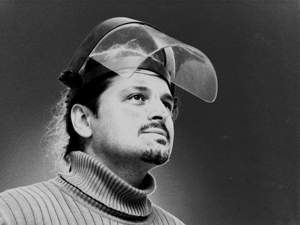 | Nikolay Selivanov - artist, teacher, author of e-learning systems. Supervises the project "Workshop of artistic design" (creativity for children) and organizes exhibitions in the recreation center ZIL. Leading Specialist of the Education, Art and ICT project: integration for development of one's personality at the UNESCO Institute for Information Technologies in Education, member of the Presidium of the Scientific and Technical Association for Information Technologies (ADIT). |
We talked with Nikolay for two hours and found out - for whatever the digital designer was created: for school, for games or for business - it will work according to the same laws.
1. Show the principle, but do not teach the pattern
Nikolay: “When I see parents who buy only“ Lego ”for children, I tell them:“ Who do you want to see him when a person finishes a higher education institution — a performer in a large company or a creator and, possibly, the owner of this company? ”
The point is that from the point of view of story-telling, “Lego” is beautiful - for example, we collect the bathyscaphe with our grandson, and in parallel, I introduce him to the subject of underwater research. But from the point of view of the development of creative thinking - this designer is weak, because it is often taught to assemble a certain thing in a strictly defined way.

Lesson at the " Workshop of artistic design ", led by Nikolai
The task of the designer is to give the experience of creating certain things — that is, to understand the basic principle, and not to learn how to do it “specifically”. In this regard, even simple cubes are a great example of a correct constructor. There is much to do with it — yes, at least a model of the universe is explained.
Another good example I’ve come across is brochures and books for DIY, which were published en masse in the 1930s. For example, it says something like this: “Here's the principle of the propeller; understanding it, you can do with it even a plane, even a quadcopter. ” That is, it shows the base from which you can achieve a lot and different. And not a step-by-step instruction for each case that sits in my head. ”
uKit: When we first started writing about constructors on Hiktaimes, a retelling of the story about “a constructor is just to do something like that” appeared in the comments - it turned out that the problem of understanding why a constructor is needed sometimes does exist:

Although the designer - what is usual, what is digital - solves the problem of knowing and probing a new direction. Passing the first steps through personal experience based on the experience of others.
For example, Scratch is both a visual environment for teaching schoolchildren to programming, and the first steps in animation that MIT experts thought for you.

The same unpretentious online designers of banners and covers from Lego are the first steps in graphic design for small ones, taking into account both the marketing task and a demonstration of how to make a poster / banner / collage.
And so - up to the adult digital designer.

A sister of our Brazilian colleague is building a website on a designer somewhere in São Paulo.
Any site can be assembled in different ways, and your task as a designer’s developer is to point out a common path and give room for rational creativity by highlighting the main points. And not to drive into the head the concept that "any site should contain an in-oh-oh-oh of such a button of green or red color, just say, my brother has risen so . "
That is why elements and logic are selected for each constructor according to the situation.
2. Situational and specific tasks
Nikolay: “Each designer has his time and place. Every designer of mine is an attempt to solve a problem. For example, take a group of schoolchildren, take them to the hall of ancient art. At the site we will long tell them how the famous Greek vases were made. But! The principle on which they were created will remain “closed” for them, believe me - new generations often do not perceive the cultural experience of the past.
And this principle is. Any engineer would say - this is the principle of the unit: when a combination of different elements forms a system for solving a single task.

Children study the designer of fantastic creatures in the advanced lessons of fine art
So I came up with the designer of fantastic characters - he lets you visually feel the method by which images were created for different types of antique ceramics. When children of grades 2-8, having tried such a designer, come to the museum, they understand how, why and from what the object was created.

And this constructor can be downloaded for free in the App Store and Google Play (the version for the tablet was no longer designed by Nikolai)
Take another example - the designer "Compose a landscape" for the Tretyakov Gallery. which we did to the exhibition of the painter Fyodor Matveyev, who lived at the end of the 18th century. This product is designed for a different task.
We wanted to give an idea of how the artists of that time worked. And the designer is based on the methodical scheme of writing a classical landscape - this is a specific color scheme, a specific concept of perspective and the principles of the arrangement of objects on the plans.

The designer himself was originally released on CD in 2008
uKit: Digital designers have always been based on the problem to be solved. Take, for example, uCoz - the first project of our company. In 2005, he solved the problem of the founders and their “get-togethers” - to make a fan-site, forum, blog or portal, without delving into FreeBSD. It was a geek product.

When, at the break of the 2000s, social networks began to replace fan sites and portals, and small business began to go online, the idea of our uKit, the “simpler designer,” appeared.
It also implements a system of soft "checks and restrictions", pushing a person to understand what data is important on the site. For example, in the first step, we ask the site creator to fill in the address fields and give the telephone number of your company - because this is important information for a client of a car dealership or a repair workshop.

Digital constructor in 2016 year. A typical block of the start screen of the main page, for example, pushes to the thought that the visitor should understand at a glance what kind of site this is.
Such soft tips do not limit the creative impulse - any block can be deleted or redone. But in every digital constructor there are limits that can not be transgressed.
3. Built-in restrictions
Nikolay: “An important task for the author of the designer is to find the line between the originality of his design and its simplicity. Because to invent a designer and use it is different. Creating my constructors, I came to this scheme: there is a grid, a clear palette and a clear set of elements from which to choose, plus several options for combining them. A kind of system of restrictions.
For example, take the same designer fantastic animals, which with textbooks buy educational institutions. I give it a very limited palette.

But in the same designer of classical landscapes, you saw the palette is richer. The dividing line of possibilities is different - we have imposed restrictions on the movement between the main plans of the picture. These frames were formed historically, they were defined by the artists of that time themselves - starting from where and what can be located (for example, architecture is always on the middle ground in a classical landscape, and on the front - an event), and ending with what the focus should be attention.
This restriction disciplines . ”

uKit: It is clear that any digital designer has a “what is possible and what is not” framework also trivial because only a developer can make changes to the system. And the developer has a plan for half a year or a year ahead: and sometimes it is more important to release a version for the visually impaired, and not to cut "the thing that ...".
Of course, in the end, some of the user hacks are implemented. But there are limitations that are intentionally “nailed”. For example, we also imposed a restriction on the color palette at our home - the user is given three sets depending on the theme of the template (business).

This, of course, is not that "a car can be of any color if it is black." This is an account of the psychology of colors (a simple example: a travel agency website will suit turquoise and blue, as they are associated with the sea and the sky). And attention to detail: so that the palette and the set of fonts match on any page.
Finally, if you are creating a website for a bakery, hardly a light pink text on an acid yellow background would be the perfect solution. And there are those who are trying to do so ...

There are other useful restrictions - for example, you can not embed a comment widget anywhere, except for the blog. First of all, why do small business widgets have comments on their website when there is an online chat, callback and feedback form? Secondly, like Nikolai and many others, we came to the grid supporting the constructor: it performs an application function - it helps the site to adapt to different screens on the fly.
4. Objects created in the constructor must have names.
Nikolay: “No matter what design we do with our children, I always encourage the guys to give names to their creations. And in the digital environment, a name is one of those most useful limitations. For example, somehow we made a designer of robots out of household trash: you take, for example, a pioneer badge with Lenin, a tin can, light bulbs, nuts — you assemble a two-dimensional robot from them, and then write instructions for it.
One of the conditions in our constructor is to come up with a name for the robot and give it a serial number. So that everything was grown-up. ”

uKit: It's natural for a person to give the name to his “child”. Well, for any information system you need an identifier, according to which, ideally, not only a robot, but also a person will be able to find a specific creation.

When you make an animation in Scratch - you need to give it a name. When you have tamed a horse or another “mob” in Minecraft - you want to give a name, and sometimes you need to pay for this privilege - to buy a tag in a game.

When a person has made a website - ideally, he needs not a third-level technical domain, which is automatically issued by any designer, but a full name for the site. This is not only a soft attempt to earn an extra 600-900 rubles a year, but a soft eyeliner to make the creation complete.
5. Usually it costs money.
Nikolay: “Most of the works are monetized by request: for example, the designer for the Tretyakov Gallery sponsored Severstal (we also did another corporate designer for the company).

The designer of fantastic animals is sold by the publishing house as a supplement to the textbook FROM
Almost all of my designers, I created in the 2000s - and their carrier was the CD. Disks with designers available for retail, I even once posted on the site. Of course, now we are thinking about how to reorganize - almost all designers have web versions that we customize, but they are created in Flash. And everyone has already switched to HTML5. ”
uKit: Online designers have one advantage - the SaaS model has long replaced for most not only disks, but also flash drives. And it seems not going to die.
Otherwise, if MIT resources do not stand behind you (as with Scratch), the PR task (as was the case with Lego Digital Designer - but the project was closed ), or you do not have an open-source project supported by a large community, sooner or later your designer will have to be monetized.

Trite because, returning to paragraph 3 of our review - there is a team that supports the project and wants to eat. Whether Minecraft is a good thing about their monetization , which began almost immediately, even before “universal monetization” three years ago. Whether it’s a website builder, there are no free solutions on the market today, if it’s not student crafts.
6. None of the designer do not play forever
Nikolay: “I didn’t meet people who would play with any designer all the time, without switching to new ones. A constructor, especially a digital one, is a demonstration of the technique. You studied it, interpreted it - and went on. "

uKit: In the world of IT projects, there is a notion of customer lifetime in this regard. For example, the average lifetime of a small business site assembled on a constructor is 2 years. Either he felt for the Internet for himself, understood what he wanted - and will consciously feel more complex platforms, or - sadly, for such a period, the company often simply closes.
7. It can mix technology
Nikolay: “The chip of digital designers, whether it’s children's educational programs, games or specialized solutions, is an opportunity to combine them with the latest technologies. And the most promising here is the use of VR in digital designers.

It seems to me that such integration will open up a lot of new applications to digital designers - in education, business (for example, tourism), preservation of cultural heritage and other areas. ”
uKit: Yes, the same Minecraft was shown in combination with virtual reality glasses:
In the world of site designers VR is hardly applicable. But AI - to the very point. Today, several website designers are trying to integrate neural networks into their products at once in order to facilitate the most tedious stage - website prototyping for a business task.
Source: https://habr.com/ru/post/398507/
All Articles